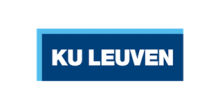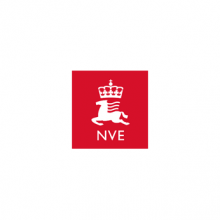4th workshop | Scaling up the sentinels in Europe
Objective of this webinar was to give a most actual and wide update about developments in relation to Sentinel satellites from Copernicus and ESA. Additionally, knowledge and experience from different national Collaborative Ground Segments (CGS) were presented. Presentations of active projects and innovations raised awareness of the possibilities and motivate ideas to make use of earth observation data making sure the scaling up phase in the programme has already started. The programme provided a mix of invited speakers and call for presentations, where users, operators and specialists in this domain could discuss their experiences. This interesting webinar was the latest in a series of four and was co-organized by representatives of EuroSDR, Norwegian Space Agency, KU Leuven, the Norwegian Mapping Authority and the Norwegian Water Resources and Energy Directorate.
You can download the workshop report here.
Venue: online
Dates: October 26th – 27th, 2020 (noon to noon)
Registration: The webinar is free of charge, but registration is required.
Deadline for registration: October 1st, 2020
Programme and presentations:
Introduction (pdf)
Session 1 Status from EC/ESA on the Copernicus and Sentinels
Copernicus today and tomorrow | Andras Roboz, Earth observation Unit EC (pdf)
Mission status Sentinel 1 | Pierre Potin, Mission manager S1 ESA (pdf)
Mission status Sentinel 2 | Ferran Gascon, Mission manager S2 ESA (pdf)
Mission status Sentinel 3 | Anja Strømme, Mission manager S3 ESA (pdf)
Session 2 Data Information and Access Service (DIAS)
Creodias | Stanisław Krzyżanowski (pdf)
MUNDI | Vincent Saleh (pdf)
WekEO | Alain Arnaud (pdf)
SOBLOO | Lison Leonetti (pdf)
Session 3 Preservation and distribution of Copernicus data
Swedish space data lab and open data cube | Tobias Edman, Swedish National Space Agency (pdf)
Sentinel Collaborative Ground Station and Copernicus activities in FMI Arctic Space Centre | Jyri Heilimo, Finnish Meteorological Institute (pdf)
Satellittdata.no: Copernicus Sentinel data in an open data space | Øystein Godøy, Norwegian Meteorological Institute (pdf)
Session 4 User cases from around Europe: Land applications
How Sentinel-2 revolutionizes nature mapping in Norway | Floris Groesz, Blom Norway (pdf)
Terrascope and its use (VITO and Informatie Vlaanderen) | Jurgen Everaerts, Informatie Vlaanderen Belgium (pdf)
Super-resolution applied to automatic extraction of different elements in the territory | Maria Cabello, Tracasa Spain (pdf)
Mapping and monitoring unstable rock slopes in the InSAR Norway project | Lene Kristensen, The Norwegian Water Resources and Energy Directorate and John Dehls, The Geological Survey of Norway (pdf)
Session 5 User cases from around Europe: Lake and coastal water applications
Analysis Ready Data, data cubes and user tools for water colour products | Carsten Brockmann, Brockmann Consult (pdf)
Water quality monitoring service in Belgian Coastal Zone using data cubes and Sentinel products | Dimitry Van der Zande, Royal Belgian Institute of Natural Sciences (pdf)
Developments of coastal and lake water quality applications and services in Norway | Therese Harvey, NIVA Denmark (pdf)
Sentinels for water quality monitoring and status assessment in Finland | Jenni Attila and Sampsa Kopononen, Finnish Environment Institute (pdf)
Session 6 Closing session
Wrap up and recommendations for further work – What’s next - Closure of meeting | Martijn Rijsdijk, Kadaster/EuroSDR (pdf)
Program committee:
Martijn Rijsdijk (Kadaster/EuroSDR), Joep Crompvoets (KU Leuven/EuroSDR), Maria Høegh Berdahl (Norwegian Space Agency/NSA), Solveig Havstad Winsvold (The Norwegian Water Resources and Energy Directorate/NVE), Torgeir Ferdinand Klingenberg and Jon Arne Trollvik (Norwegian Mapping Authority/NMA).
Media partner:
GeoConnexion






